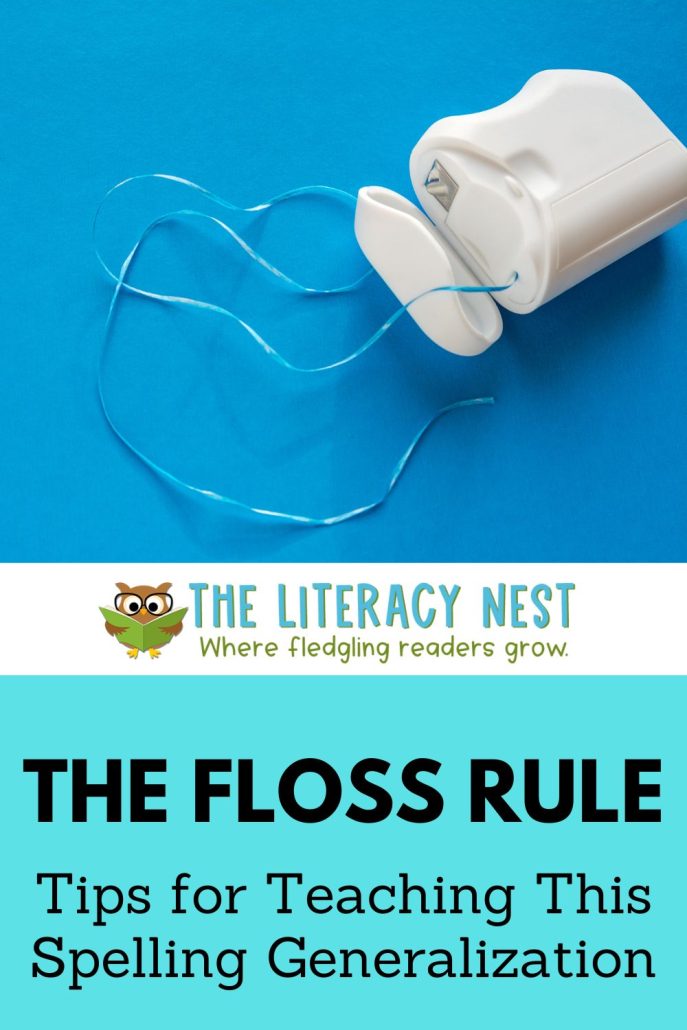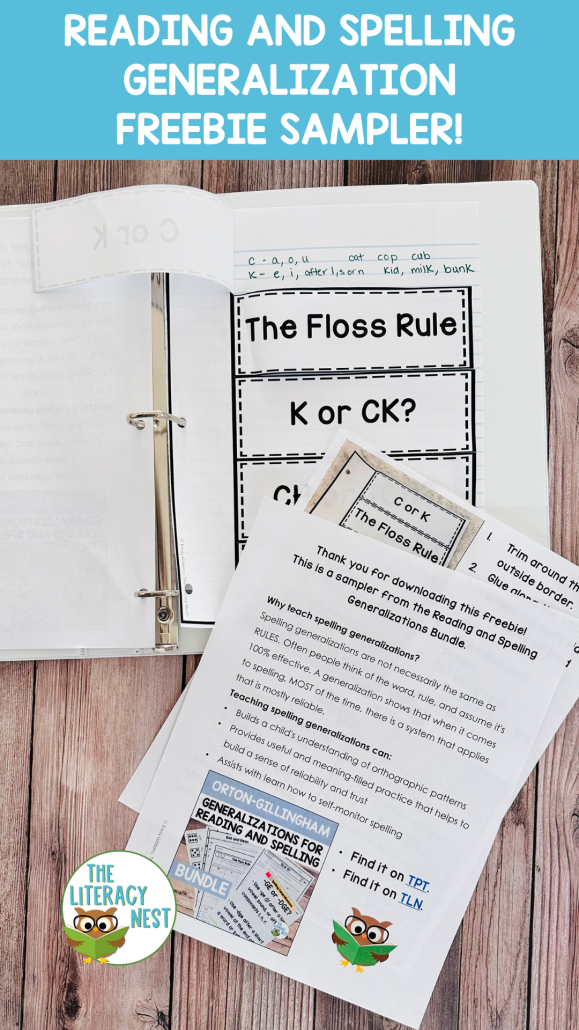The FLOSS Rule: Tips for Teaching This Spelling Generalization
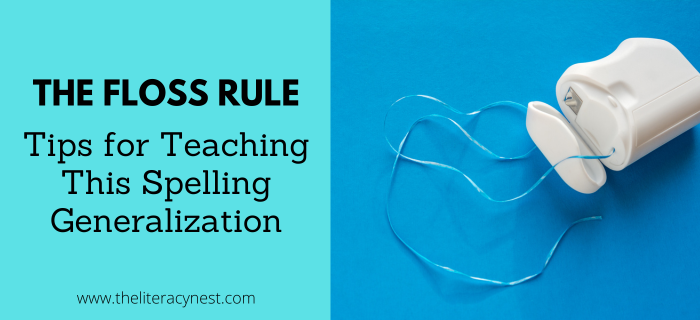
Some of the most powerful tools we teach our Orton-Gillingham students are spelling generalizations. These generalizations help them choose the correct spelling option. Most adults are not even aware of these “rules”, because, with increased familiarity with the orthography of English, one develops an awareness of what “looks right”. One way we can help our students with dyslexia to develop that sense of what looks correct is to give them the tools to choose correctly and practice the correct spellings repeatedly. Regardless of which scope and sequence you follow, the “FLOSS rule” is usually the first of these spelling generalizations to come up.
What is the FLOSS Rule
To learn the floss rule, students need to know closed syllables, all of their short vowel sounds, and consonant sounds. It is helpful if they are familiar with some digraphs and initial and final consonant blends.
In short, the FLOSS rule states that:
- a single-syllable word with a single short vowel (closed syllable)
- where the vowel is immediately followed by f, l, s or z
- and only by f, l, s or z
- the final letter is doubled
Download our Reading and Spelling Generalizations freebie sampler! It includes mini posters, a note-taker, and a handy cheat sheet with links to blog posts and a video with teaching tips!
11 Helpful Teaching Tips for the FLOSS Rule:
Download this printable guide for teaching the FLOSS Rule!
1. Use Visuals
Use a tangible object, such as a roll of dental floss, when introducing the rule to help make the rule memorable. It is also helpful to have a visual in the student’s notebook or a bulletin board to reinforce the guidelines of the floss rule.
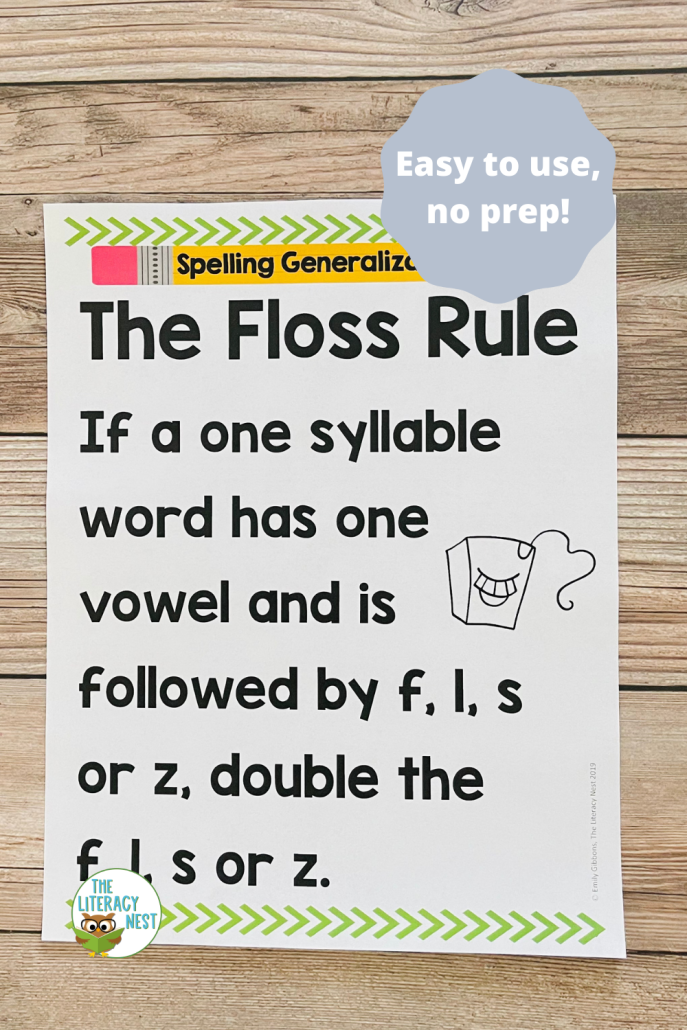
2. Zee Floss Rule!
Some teachers include z as part of the floss rule, while others don’t because there are very few words that end in zz. If you choose to include z, it is a good idea to somehow include z as part of the mnemonic such as the FLOSS-Z rule. I like to call it “Zee Floss Rule” with a goofy French accent. Like a tangible object, humor aids memory.
3. Hand Motions
Use hand motions when describing the floss rule. Having students utilize their kinesthetic motor memory is highly powerful. Fortunately, there is a timely dance craze sweeping the nation. Can you floss? Can your students? If not, there is sure to be an appropriate video online to help you out.
4. Magnetic Letters
Use magnetic letters or tiles to build words and test out the floss rule. It is often helpful to students to take risks and try applying the rule more independently with manipulatives. Not only are they engaging additional senses, but it often relieves anxiety when a mistake is not written down and is rather “permanent”.
5. Word Sort
Sort words into floss and not floss words. Perhaps use a checklist to have students check the words for the criteria. When a word ends in l or f that is part of a blend, such as golf, this does not follow the floss rule. Make sure to use examples like this when teaching the rule to develop a solid understanding of the principle. Sort floss words by ending letters. For example, sort a word list into ff, ss, ll, and zz words.
6. Avoid Never and Always
I prefer to say Spelling Generalizations rather than Spelling Rules because there are exceptions. I also try to stress that this USUALLY happens. When I say NEVER or ALWAYS to a student it really jumps out at them because it is so rare.
7. When doesn’t it apply?
Address the times that the FLOSS rule doesn’t apply.
In multisyllabic words, it is not predictable and likely not helpful to the student unless it is a compound word. There are a number of exceptions to this rule that are extremely high-frequency words. I am upfront with students about these. I tell them that there are exceptions to the rule and many of them are words that they already read and write well. Next, I explain that when a word ends in s and it makes the /z/ sound as in his, is, or was, it isn’t doubled. I also find it useful to address words like bus and gas which are shortened forms of longer multisyllable words.
This is a great opportunity to make morphology and etymology a part of spelling very early on. Sometimes when students ask about an exception, we will explore the etymology together to see if we can explain the mystery. Rather than making a lengthy list or attempting to memorize exceptions, I introduce the issue and address them in dictation or word lists as they come up on an ongoing basis.
8. Avoid -all and -oll
Choose words carefully. Avoid using words with all like ball or oll like roll. These vowels do not make their expected sounds and have generally not been taught when the FLOSS rule is first introduced.
9. Play Games!
Play games to reinforce the FLOSS rule. These need not be lengthy or complicated games, but frequent practice and reinforcement help to keep the learning fresh.
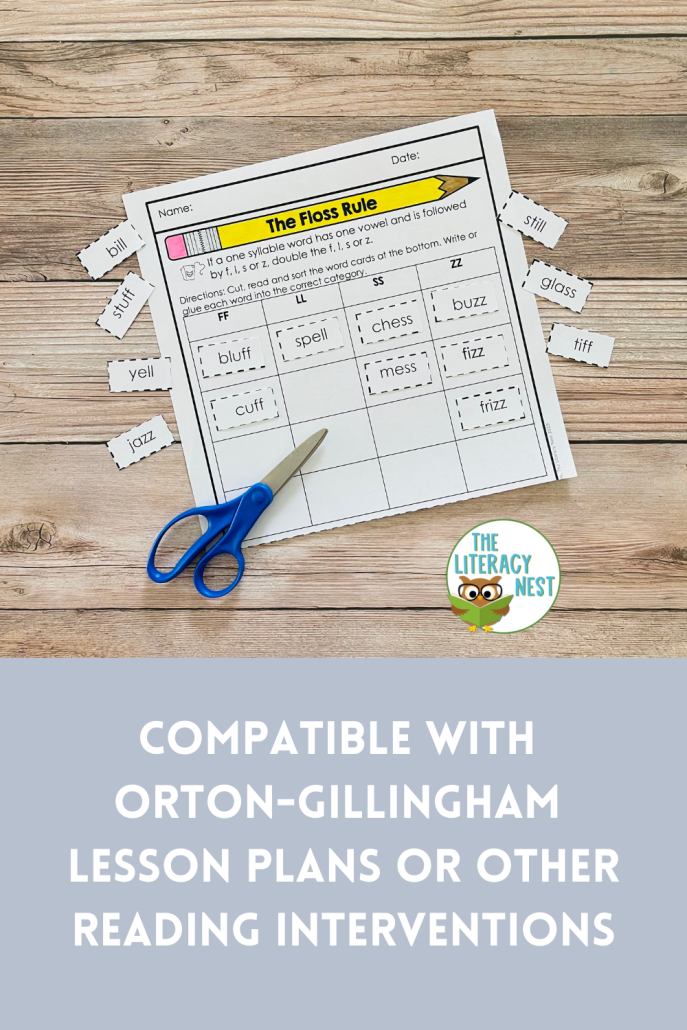
10. Spiral Back
Weave the FLOSS rule into review and spiral back. One natural time and place to do this review is before introducing a new short vowel spelling rule. Building in review in the previous few lessons and immediately before introducing the new concept is going to help link the similarities and deepen the student’s understanding by anchoring their knowledge. For example, before teaching the k/ck rule, I might revisit FLOSS in SOS, dictation, a reading passage, and in a quick game or activity in a couple of lessons. I might introduce the new rule by having students correctly choose whether or not to double certain words and explain their thinking and verbalize the FLOSS rule to me in their own language.
11. Ask why?
When giving dictation, ask the student WHY they spelled a word with ff, ll, ss, or zz. Help them to articulate their thinking. Our kids are often experts on reading teacher cues, even the ones we don’t really want them to. Be careful not to ask them WHY they spelled a word with the FLOSS rule only when they have applied it incorrectly or only asked about their choice when they doubled the final letter. Our students have learned very often to change their answers (which they may not have been sure about anyway) on the basis of questions teachers may ask. If a student is going to change an answer, it is still important for them to verbalize the why.
For example, if a student writes the word shelf, and you ask them why they didn’t double the f, our kids have a tendency to immediately add an f. Similarly, if you ask a student why they spelled the word dress with a double s at the end, they may immediately try to erase the s. Help them to explain their understanding of the generalization, before deciding whether changing their answer is appropriate. Be sure to vary the circumstances and types of questions.
The Floss Rule Spelling Generalization for Orton-Gillingham Lesson
If you are looking for activities for systematic and explicit phonics instruction, this resource is for you! This is a resource to teach the Floss Rule (FFLLSSZZ) spelling generalization. It is compatible with Orton-Gillingham lesson plans, dyslexia intervention, and other reading intervention programs. If you are an Orton-Gillingham tutor or teacher, these work well with your lesson plans! They are suitable for 1:1, small groups, online teaching or tutoring, and distance learning.
You can grab it in The Literacy Nest Shop or on TpT.
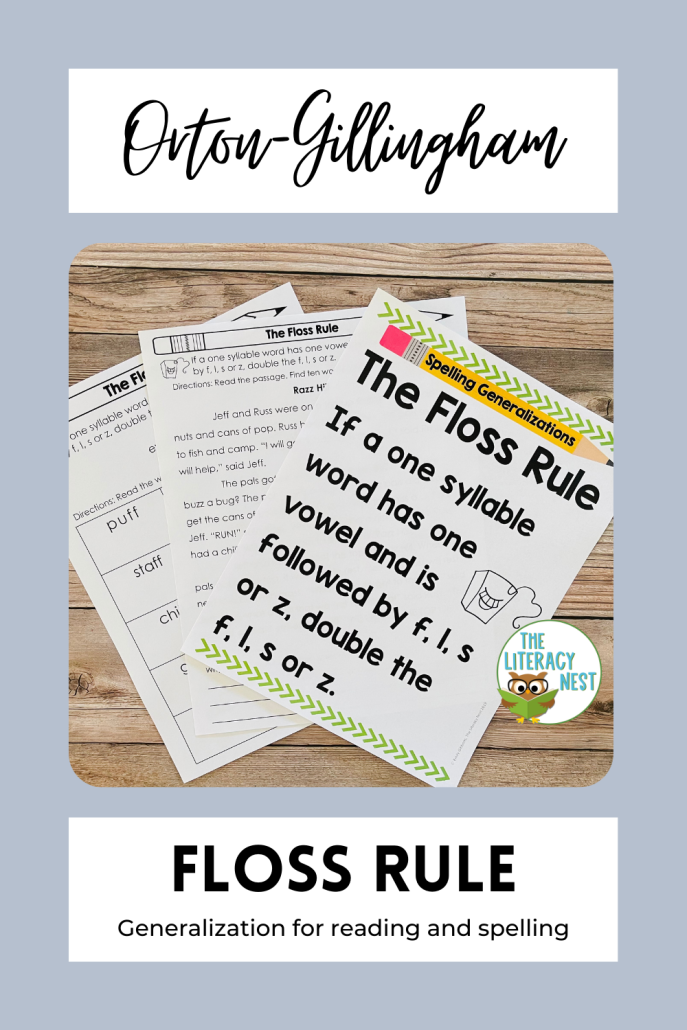
Grab the complete Orton-Gillingham Spelling Generalizations BUNDLE, here!
More on Spelling Generalizations
It is sometimes hard to put ourselves in the shoes of a struggling reader. It is impossible to unknow a lifetime of learning, known words, and orthographic mapping in our brain in order to see reading and writing tasks through their eyes. Knowing these spelling generalizations on an instinctual level seems less complex to a proficient reader, but for a student that has a relatively small core of known words, learning a set of criteria and a generalization is going to mean the difference between learning dozens and dozens of words individually and learning one tool that will unlock an abundance of words.
Are you looking for a list of words that follow the FLOSS Rule? Word List Builder has got you covered!
Save time searching for words that follow the FLOSS Rule! Create customized and meaningful review, build your folder of words, create templates and games, and much more in Word List Builder.
